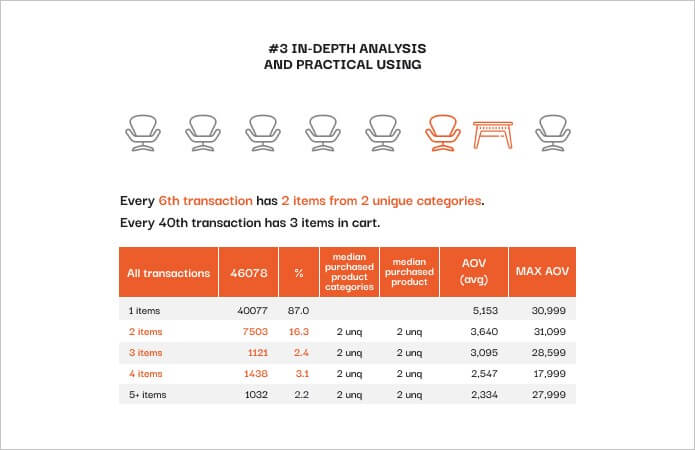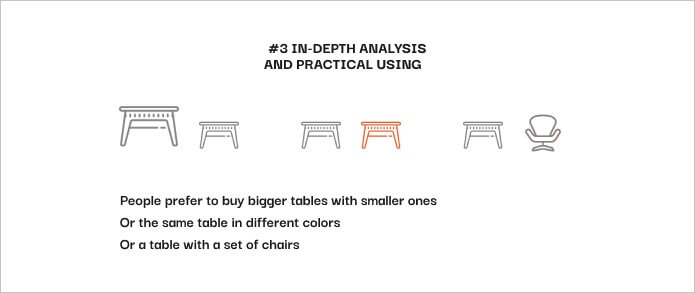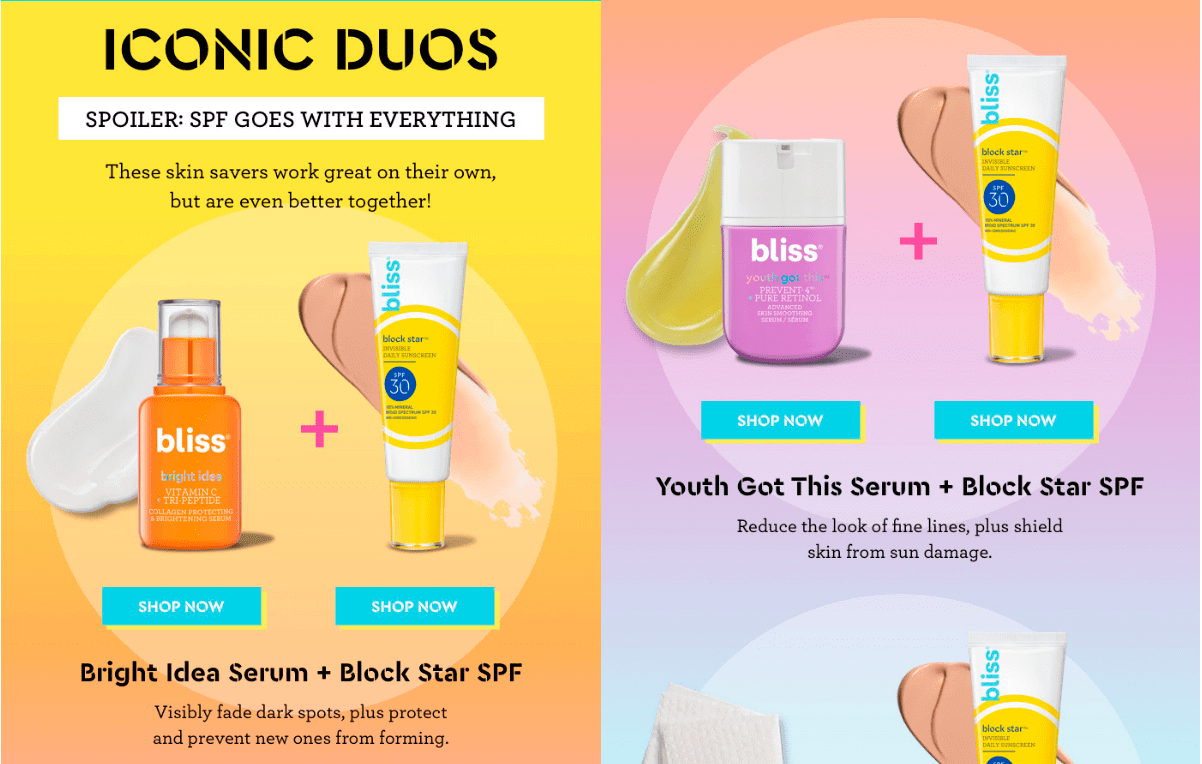One of the most powerful and effective tools for researching customer behavior patterns is definitely a market basket analysis.
In a nutshell, extensive data analysis is taken as the basis, including purchase history to identify existing groups of products that are most often bought together, as well as potentially profitable combinations of products.
In this blog post, we’ll take a closer look at how this tool can help retailers, as well as how we implement it step by step for our customers.
What is Market Basket Analysis
Influence of Market Basket Analysis on KPI
How We Perform Market Basket Analysis for Our Clients
Ways to Use a Market Basket Analysis in Business
What is Market Basket Analysis
Market basket analysis is a technique used by large and medium-sized retailers to analyze big data on purchasing patterns to find product groups that are likely to be bought together.
Performing this kind of analysis requires wide experience in statistics, data science, machine learning, and programming skills, including Python, for example. If you don’t have such skills, no worries — there is a range of tools and online services available.
Let’s take a simple example to understand how it works.
If a user decides to buy a midi dress, what is the likelihood that she will agree to purchase high heels and jewelry to match the dress in addition? This is what ASOS does in their recommendations in the ‘Buy this look’ block on the product details pages.

Influence of Market Basket Analysis on KPIs
Implementing a market basket analysis has many benefits for businesses and helps retailers achieve the following KPIs:
Increase an average order value. Without a doubt, the ability to offer products that fit well together has the potential to increase an average order value as a whole.
Increase conversions by implementing cross-selling practices. According to Forrester, product recommendations can lead to up to 30 percent of revenue.
Decrease your bounce rate by improving your overall user experience.
Improve customer engagement and loyalty.
How We Perform Market Basket Analysis for Our Clients
At Magecom, we regularly conduct this type of analysis for our clients as part of our UX & conversion rate optimization (CRO) service.
In most cases, we do this in order to understand which products customers buy with others, and then offer the most popular combinations as sets or provide more efficient cross-selling practices. In fact, the application of this tool in ecommerce is limitless.

And below, you will find the algorithm of actions that we follow in developing such an analysis.
#1 Sales reports generation
In order to start working on the market basket analysis, we need the results of the online sales report, which contains the following information:
Product;
SKU;
Product category;
Number of purchases;
Date;
Price.
In other words, you need a transaction report that will display a list of products in the context of each transaction.
We upload such reports with the data for at least the last 12 months. The larger the data sample is, the more likely it is to find more effective and popular combinations of products.
Reports on online sales can be obtained from the site admin panel. After receiving a sign-off from a client, our developers can upload it within 15 minutes.
Also, if a client has an offline store or point of sale (POS), we request exactly the same offline sales report.
#2 Clustering and assembling data
Further, the received data should be divided into clusters to highlight the main trends and customer behavior patterns.
There are simple and effective online tools and services to help you, such as Exploratory, where you can upload your sales reports. By the way, you can find a nice guide on their website on how to create a market basket analysis from scratch and also an example of a grocery store.
One more thing: our strong recommendation is to always use the paid versions of such tools, which allows you to secure the data of your transactions.
Here’s the example of the market basket analysis summary:

#3 In-depth analysis and practical using
Next, we usually interpret the analysis results into a single view, and then visualize it for our clients in a clear way:


It helps to make the most effective cross-sell deals on product pages in the future, or even combine them into product sets and sell in this way if it makes sense.
We really love how IKEA deals with combinations and sets of products. And what for the record, beautiful photos of the interiors, in which these sets are put into, do their job too.

Ways to Use a Market Basket Analysis in Business
1. Recommendations, cross-sells & bundles
As we’ve mentioned before, a market basket analysis can be a foundation for building user-friendly recommendations. This process can be fully automated using ready-made online services. We select custom tools for our clients based on the capabilities of their ecommerce engine and budget. Some platforms already have built-in recommendation capabilities, such as Adobe Sensei in Magento Commerce.
Pandora placed a block ‘Compatible with’ on product details pages, where they skillfully demonstrate additional products.

2. Marketing campaigns & messages
No matter whether it’s email marketing campaigns, social media posts, or brand collaborations, market basket analysis results can potentially improve the performance of all of them.
Make effective suggestions that customers are most likely to purchase. This is how Bliss benefits from the power of marketing and their customer behavior research in their email campaigns.

3. Content placement & store layout
Understanding what combination products are bought could also help in placing them on other pages of the website. Keep in mind that product details pages are not a single opportunity.
The Haute Hijab organized its homepage in such a way that consumers can instantly see items that perfectly go together.

4. Sales forecast & expected revenue
The data from the analysis results can help predict demand and future purchases, as well as make sure that the inventory is fully prepared for that.
5. Offline merchandising optimization
We mentioned above that you can also conduct a market basket analysis of your offline sales and transactions to come up with effective combinations. The same thing you can use to optimize placing physical items in your stores.
Conclusion
This kind of analysis is a powerful and sophisticated technique that helps retailers with a wide range of tasks — from the in-depth customer research to core KPIs achieved after the implementation of the results.
We regularly conduct this type of analysis for our clients and see an increase in conversion by up to +25 percent compared to the initial indicators after the implementation.




